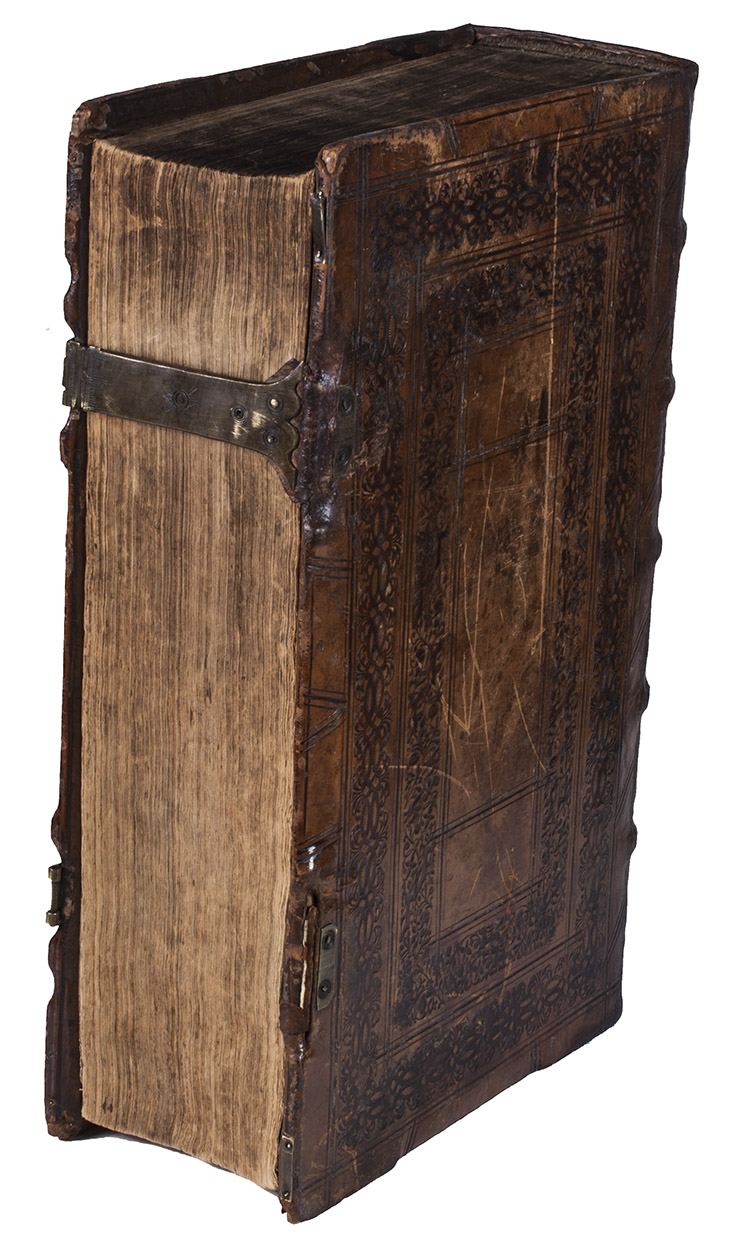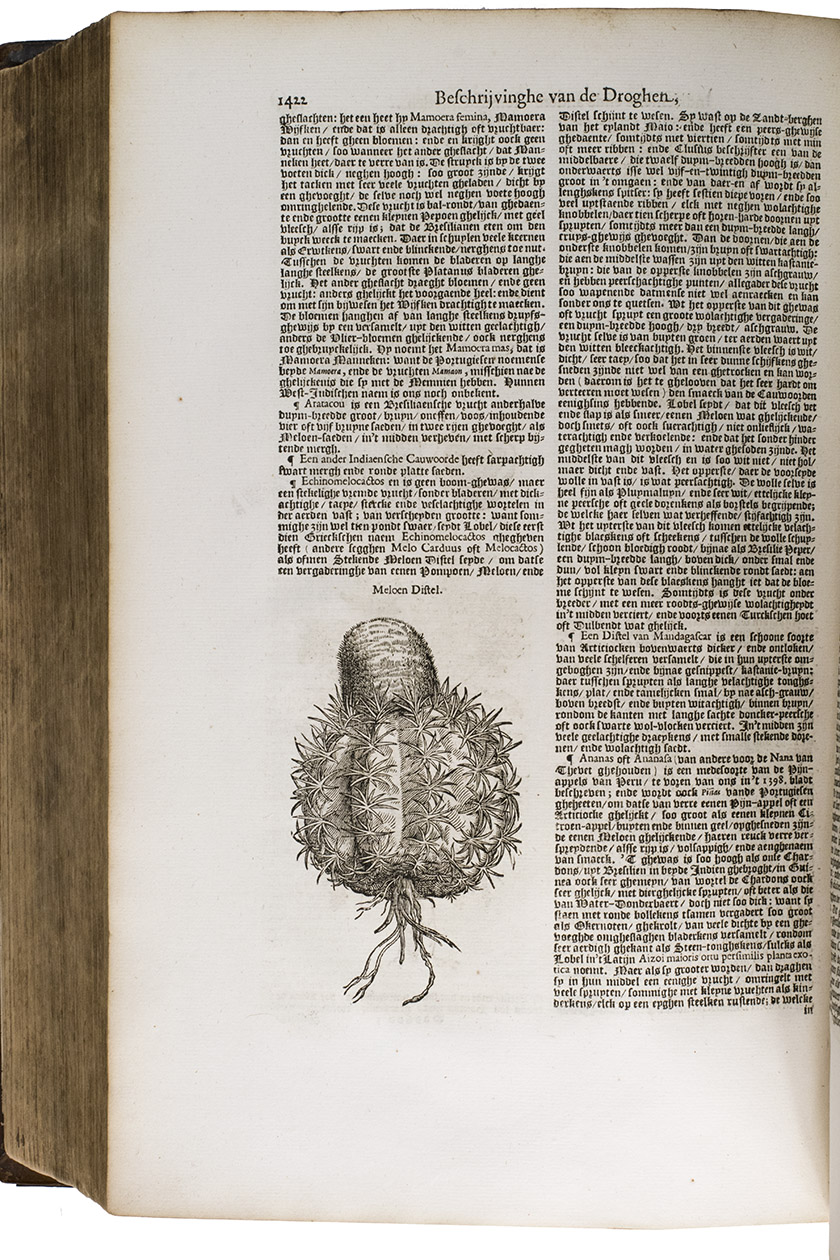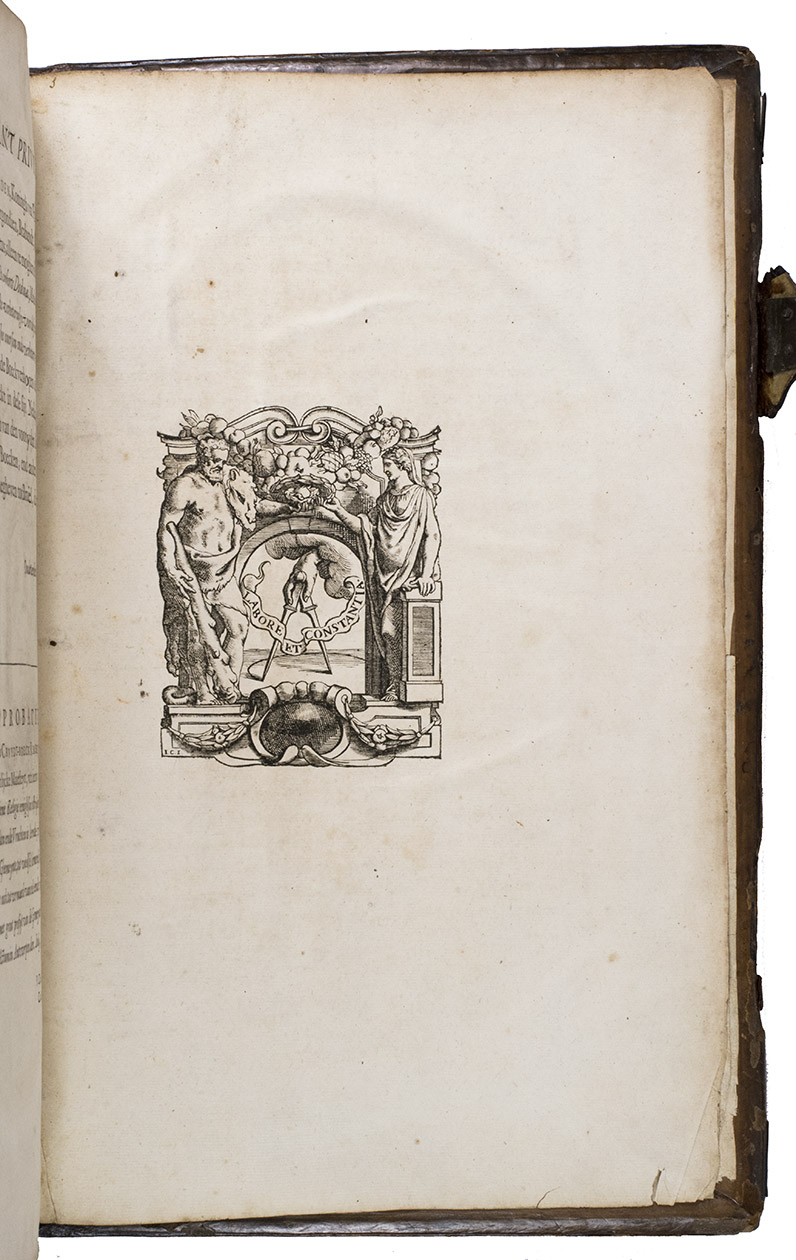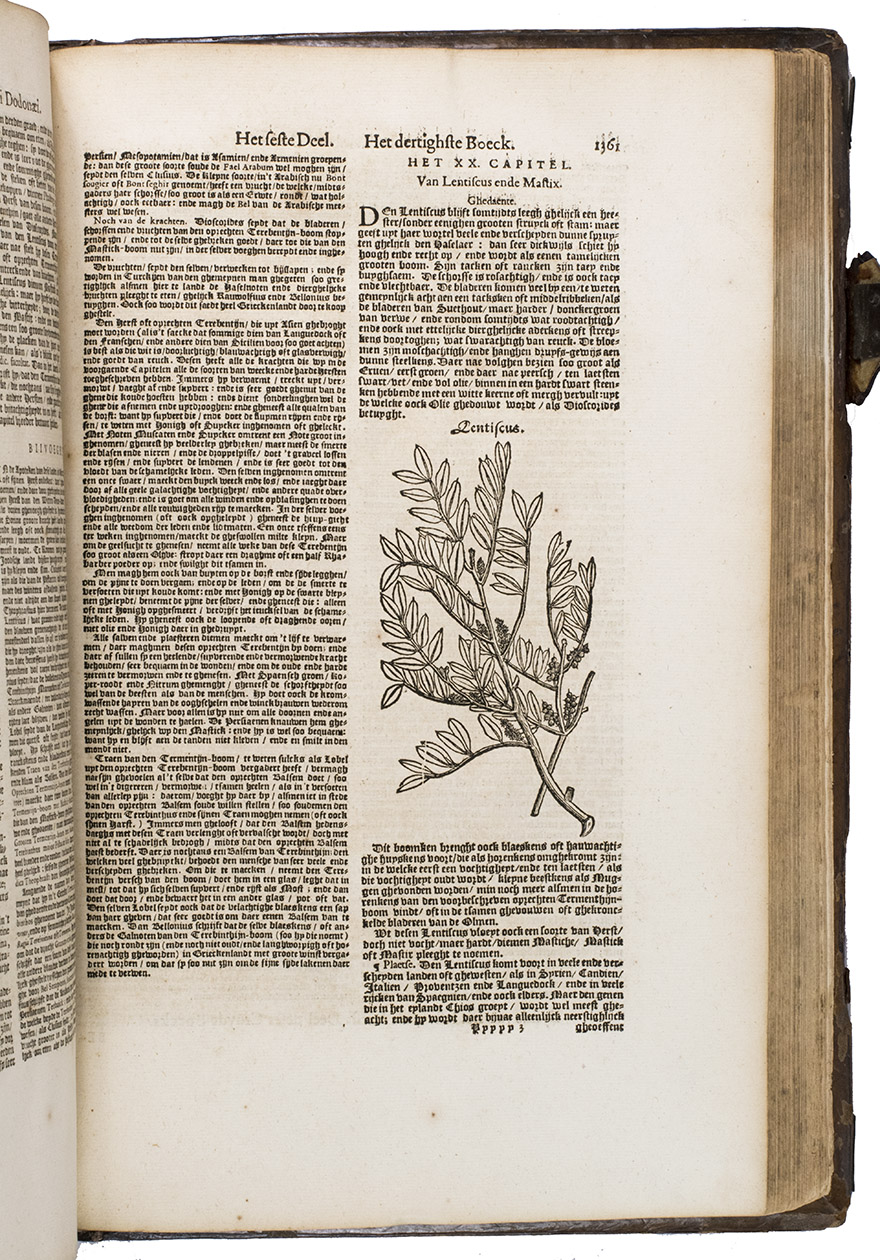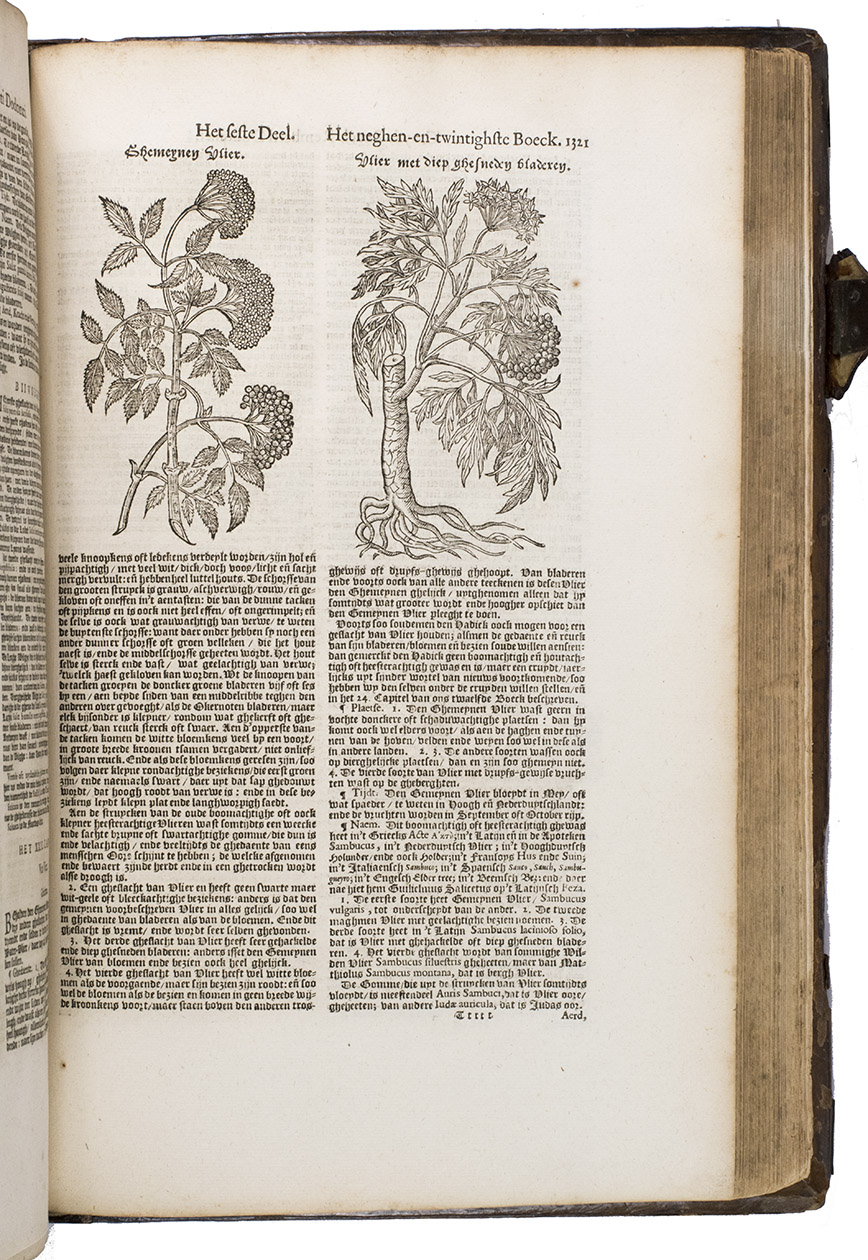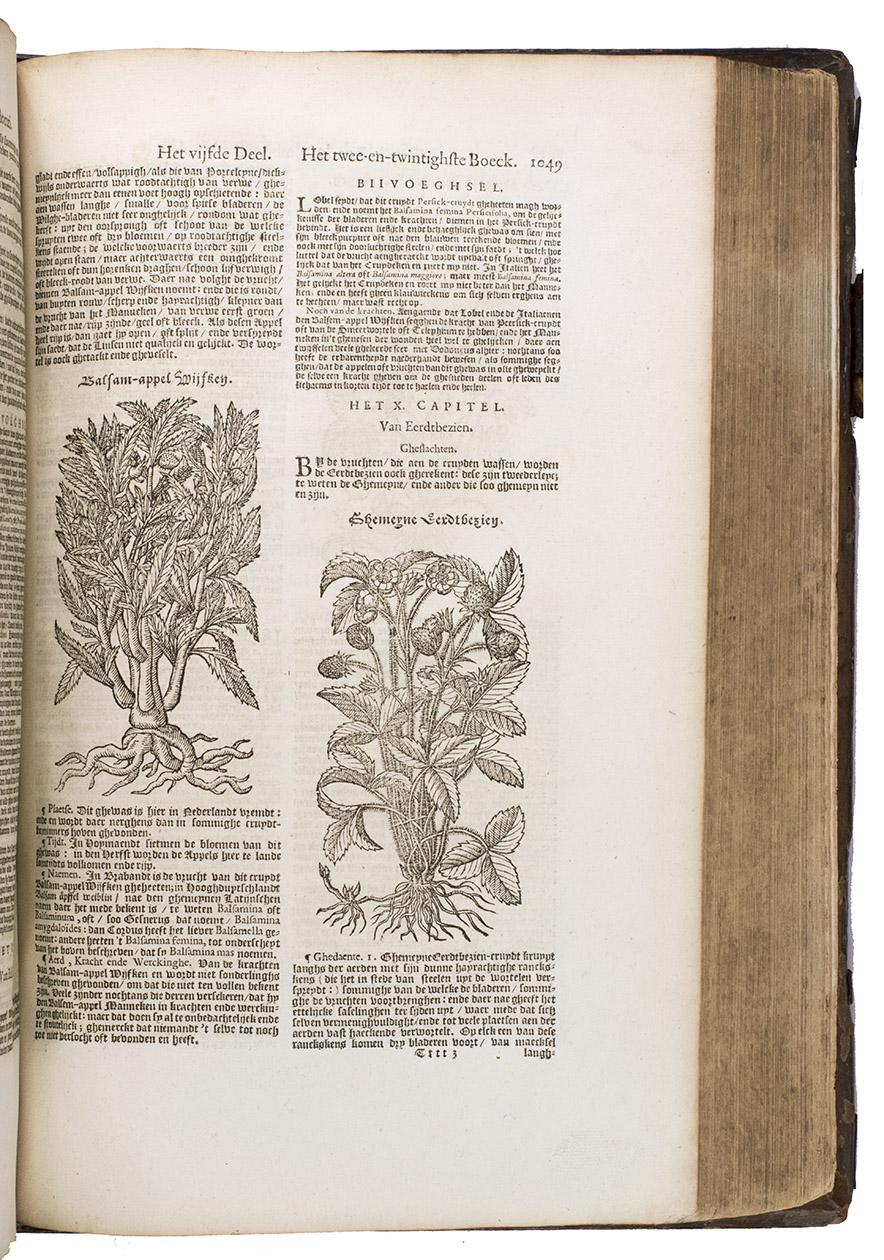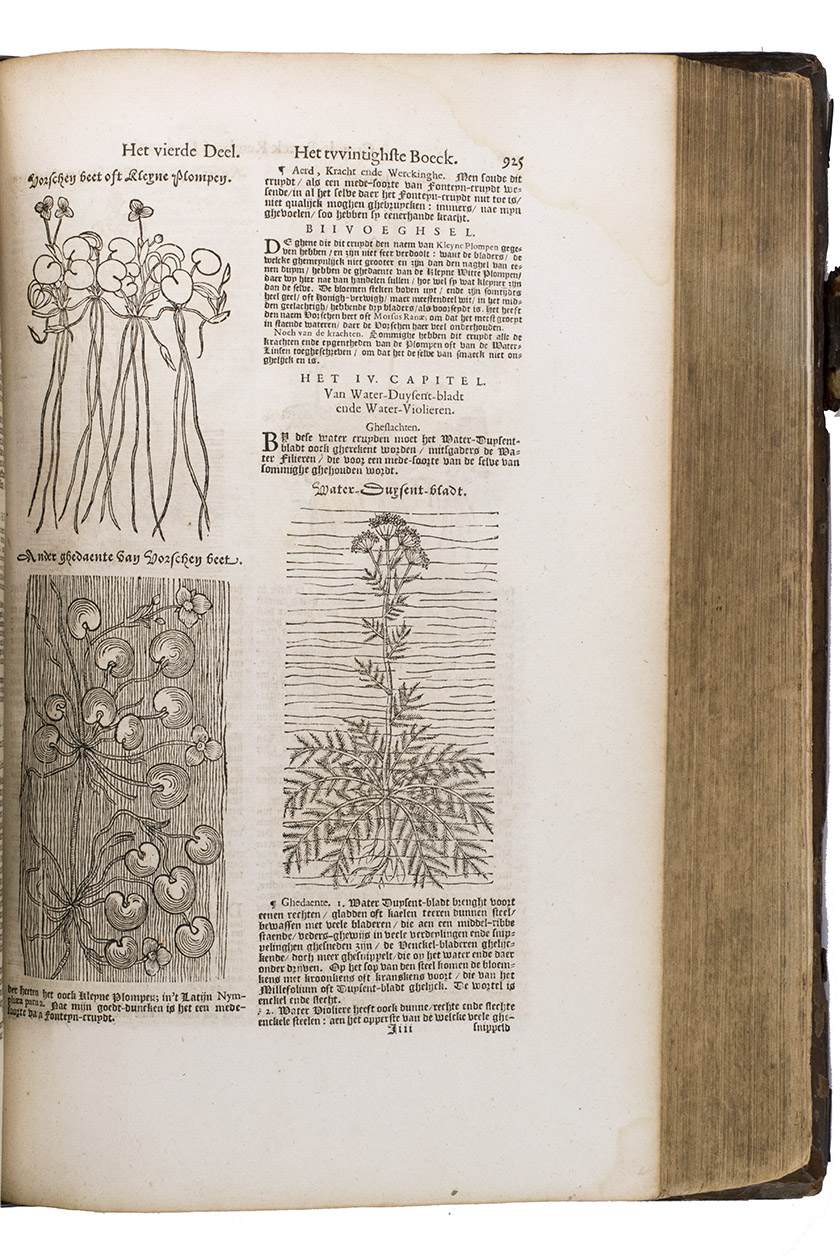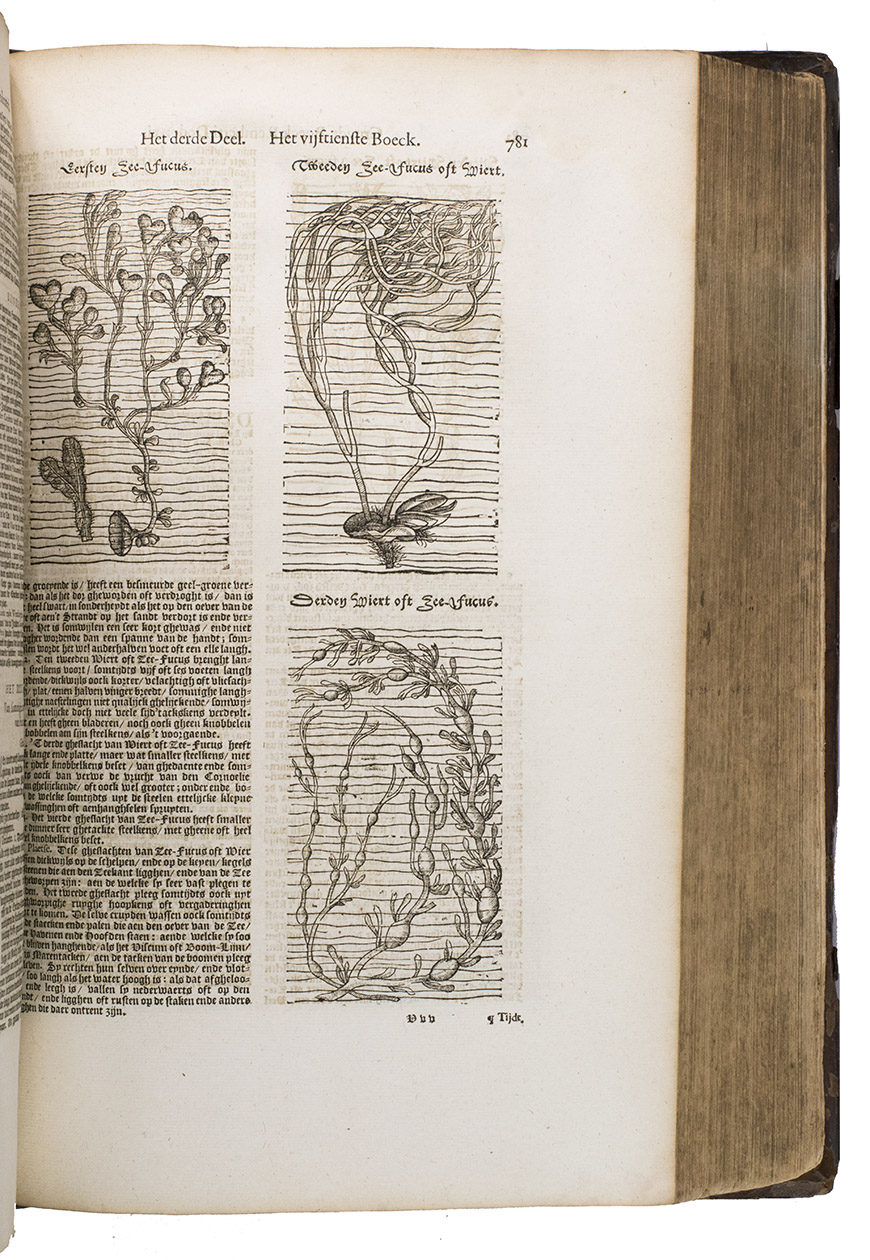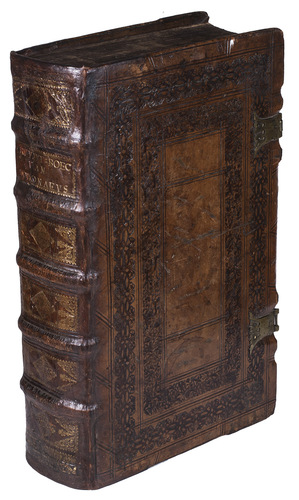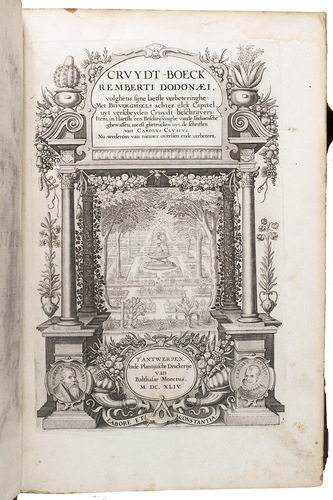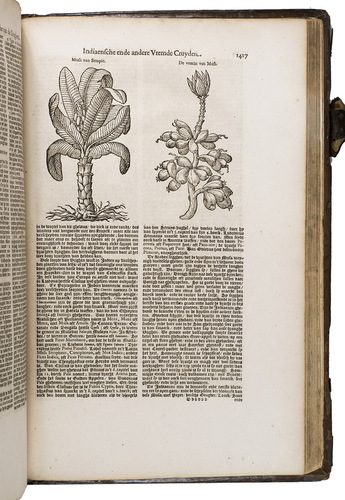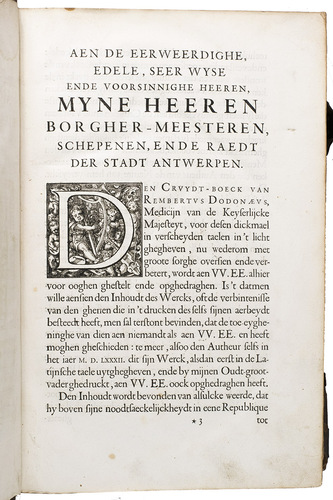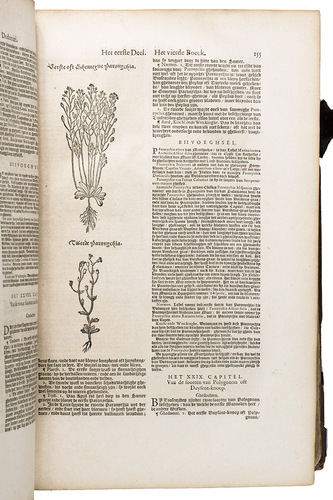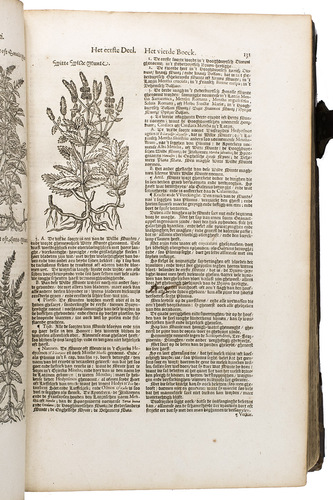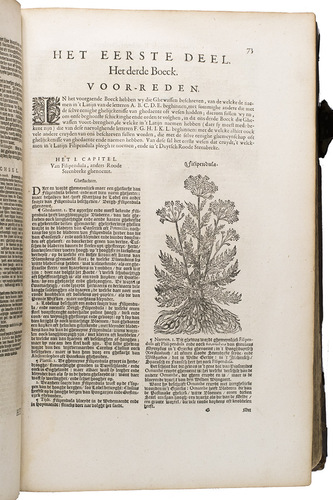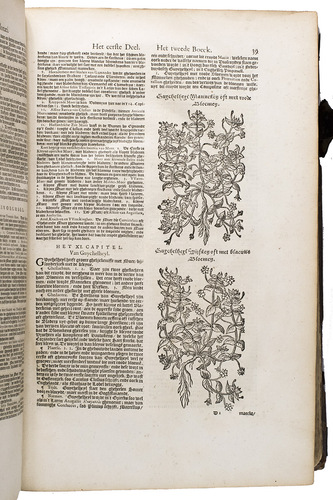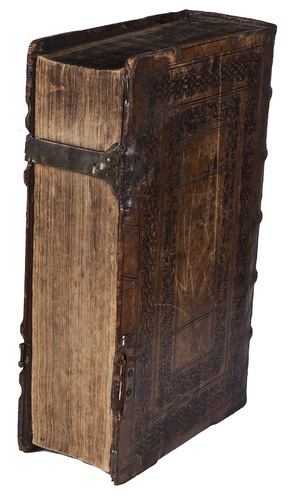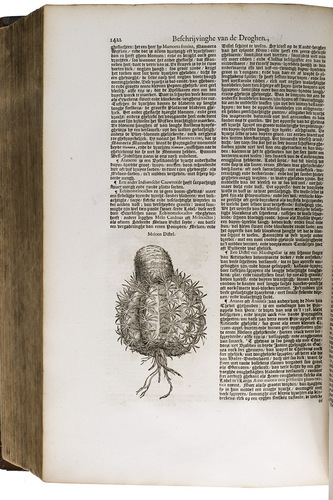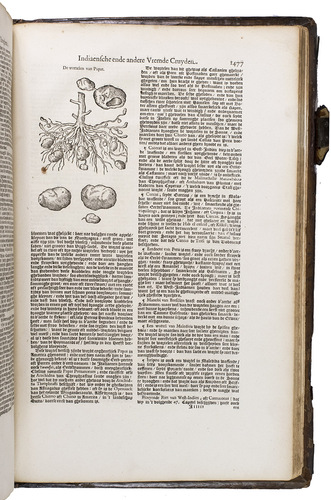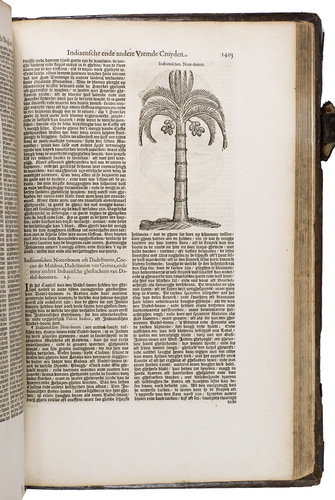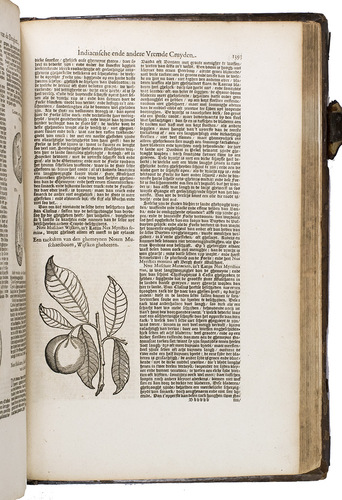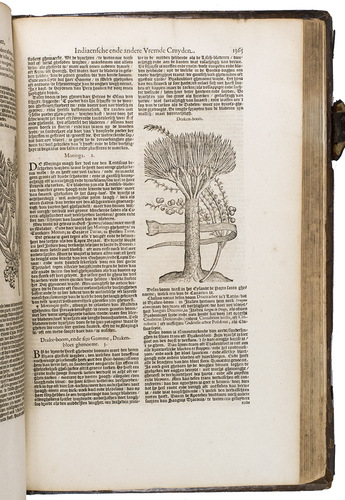DODONAEUS (DODOENS), Rembertus.
Cruydt-Boeck ...
Antwerp, Balthasar II Moretus in the Plantin printing office, 1644. Large folio (ca. 25 x 41 cm). With an integral, richly engraved title-page, with 1470 botanical woodcuts in the text, woodcut decorated initials, woodcut tailpiece with the Plantin compasses device at the end of the index and larger woodcut publishers device with the compasses and motto on the last, otherwise blank leaf. Set in textura types with extensive roman, italic and civilité. Contemporary gold- and blind-tooled calf over boards, with brass catch- and anchor-plates and one brass clasp. [1], [1 blank], [1], [1 blank], [32], 1492, [59], [1 blank] pp.
€ 6,500
Third and last revised Dutch edition of a classic herbal. The Cruydt-Boeck, not to be confused with the Cruydeboeck first published in 1554, was largely a Dutch translation of the Stirpium historiae pemptades sex, libri XXX, first published by Plantin at Antwerp in 1583. The Stirpium represents Dodoens best and last great work: a monumental botanical study divided into 6 large sections, each containing 5 books, with the plants classified in 26 groups. This system was far superior to all his earlier classifications. Joost van Ravelinghen or Justus Raphelengius (1573-1628) at Leiden, Christophe Plantins grandson, first published the present translation in 1608, adding extra information in a smaller type at the end of each chapter. These additions give information on the qualities of the plant taken from the Cruydeboeck, if not present in the Stirpium, as well as new information or descriptions of new plants taken from the work of other authors, including Carolus Clusius and Mathias de Lobel. At the end Van Ravelinghen added a whole new part on exotic plants taken from the works of Clusius, Garcia da Orta, Nic. Monardès, Chr. Acosta and others. The present 1644 edition follows the 1618 edition, apparently a copy annotated by Van Ravelinghen, so that it provides his final thoughts. The printer-publisher was Plantins great grandson, who had succeeded to his famous Antwerp printing office and publishing house.
The woodcut illustrations in the first Dutch edition are for the most part the same as in the Stirpium, but there were several alterations made and some replacements, while 25 new woodcuts of new plants were added, not counting the 52 new woodcuts in the extra supplement on exotic plants. In the second Dutch edition of 1618 Van Ravelingen again added substantial information, following the second Latin edition (Antwerp, 1616). The present 1644 edition does not name Van Ravelingen on the title-page, but includes his name at the end of his 1618 note to the reader. It adds 14 new woodcuts, replaces 18, moves 3 from the supplement to the main work, and omits 3.
With a contemporary(?) manuscript annotation describing the book and its author in French in brown ink on the verso of the first free end leaf. With one (of two) brass clasp remaining, professionally reattached to the anchor plate. The boards and the spine are somewhat scuffed (mainly the back board), but the detailed gold- and blind-tooling is still clearly visible. The hinges have been professionally restored. A few leaves show minor tears or small defects to the margins, without affecting the text. The edges of the book block and thus the edges of the leaves are very slightly browned, internally very slightly browned and foxed, without affecting the clarity of the woodcut botanical illustrations. Otherwise in good condition. Bibl. Belg. II, pp. 226-227 (D121); Nissen, BBI 518; Pritzel 2345; Stafleu & Cowan 1492; STCN 31381001X (9 copies); cf. Van Meerbeeck, Dodoens, pp. 277-278 & passim; Dodonaeus in Japan. pp. 191-363.
Related Subjects:








